Goldilocks and the Three Great Walls (长城) Posted by Stephen on Dec 16, 2011 in Uncategorized
Now that we’ve covered some Great Wall attractions and locations, lets compare and contrast the three most popular greater-Beijing Great Wall locations to find the Great Wall trip that is right for you. We’ll be covering three very different sections of the wall, including:
1) Simatai (司马台), 2) Badaling (八达岭) and 3) Mutianyu (慕田峪).
The following is a brief summary highlighting the pros and cons of each Great Wall location to help you decide on which section of the Great Wall to visit next. Check out the short one minute Great Wall video mash-up below:
1) Simatai (司马台):
The Simatai or 司马台 (Sīmǎtái) section of the Great Wall is located just north of Miyun County, (about 120 km northeast of Beijing), and holds the access to Gubeikou, a strategic pass in the eastern part of the Great Wall. Originally built during the Northern Qi dynasty and rebuilt in the Hongwu years of the Ming dynasty by Qi Jiguang, this section of Great Wall is one of the few to retain the original features of the Ming dynasty Great Wall.
The Simatai Great Wall spans some 5.4 km long and is connected by 35 beacon towers. The Simatai Wall is unique because it incorporates the different characteristics of each section of the Great Wall into one locale. A specialist on the Great Wall, Professor Luo Zhewen, has said that “The [Simatai] Great Wall is the best of the Chinese buildings, and Simatai is the best of the Great Wall”.
Simatai is the least crowded of the walls I’ve visited, located in a vastly more picturesque and remote area than Badaling or Mutianyu. That being said, it’s quite a pain to get to, requiring renting or owning a private car. It’s in the middle of nowhere, a notion that is both liberating and unheard of in the crowded mainland. If you want to traverse the great wall uninterrupted by throngs of loud tourists, this is your Great Wall, but don’t expect to find anyone willing to take your picture with the wall.
Click here for full post on Simatai Great Wall.
2) Badaling (八达岭):
Badaling or 八达岭 (Bādálǐng) is the most visited section of the Great Wall of China, located approximately 50 miles (80 km) northwest of Beijing proper in Yanqing County. The section of the wall was built during the Ming Dynasty, along with a military outpost reflecting the location’s strategic importance. The highest point of Badaling is Beibalou, which is approximately 1000 meters above sea level.
The portion of the wall at Badaling has undergone heavy restoration, and in 1957 it was the first section of the wall to be openned to tourists. Visited annually by millions, the immediate area has seen significant development, including hotels, restaurants, and a cable car. The recently completed Badaling Expressway connects Badaling with central Beijing. Line S2, Beijing Suburban Railway, serves people who wanted to go to the Great Wall from Beijing North Railway Station. Tickets are available at Beijing North Railway Station to Badaling Station. A bus also runs frequently from Deshengmen to Badaling.
Badaling is notorious for being crowded, congested and polluted. It is one of Beijing’s largest “tourist traps” and depending upon what time of day and year you visit, may be swarming with Chinese and foreign sights-seers. While it’s easy to get to, the long lines and lack of scenery are not work it in this person’s opinion. Imagine using a stair-stepper for three hours with 10,000 other people in 95 degree weather. That’s Badaling in a nutshell.
Click here for previous post on the Badaling Great Wall (八达岭长城).
3) Mutianyu (慕田峪):
The Mutianyu or 慕田峪 (Mùtiányù) section of the Great Wall of China is located in Huairou County, 70km northeast of Beijing. The Mutianyu section of the Great Wall is connected with Jiankou in the west and Lianhuachi in the east. As one of the best-preserved parts of the Great Wall, the Mutianyu section of the Great Wall used to serve as the northern barrier defending the capital and the imperial tombs.
First built in the mid-6th century during the Northern Qi, Mutianyu Great Wall is older than the Badaling section of the Great Wall. Later, in 1569, the Mutianyu Great Wall was rebuilt and restored. Today most parts of the 1569 restoration remain and are still well preserved. As a result, the Mutianyu Great Wall is considered the strongest and most durable sections of Great Wall.
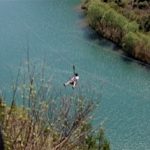 I consider Mutianyu the “goldilocks” of the Beijing area Great Wall sections–it’s not too crowded and not too remote. Mutianyu does have more scenic vistas than Badaling, but still has its fair share of tourism, including many restaurants, bars and shops . It does however, have a beautiful lake cutting through its valleys and a zip line that allows you to fly over and and take in the sights from a birds-eye view.
I consider Mutianyu the “goldilocks” of the Beijing area Great Wall sections–it’s not too crowded and not too remote. Mutianyu does have more scenic vistas than Badaling, but still has its fair share of tourism, including many restaurants, bars and shops . It does however, have a beautiful lake cutting through its valleys and a zip line that allows you to fly over and and take in the sights from a birds-eye view.
Mutianyu is a solid choice for your first visit to the Great Wall, blending an equal amount of nature and tranquility with entertainment and fun. I’ve been multiple times and still enjoy zipping over the reservoir with a camera in hand.
Click here for a video post by Sasha on Mutianyu.
Follow Steve on twitter: @seeitbelieveit

Build vocabulary, practice pronunciation, and more with Transparent Language Online. Available anytime, anywhere, on any device.
About the Author: Stephen
Writer and blogger for all things China related. Follow me on twitter: @seeitbelieveit -- My Background: Fluent Mandarin speaker with 3+ years working, living, studying and teaching throughout the mainland. Student of Kung Fu and avid photographer and documentarian.



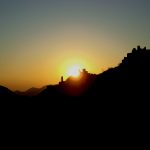
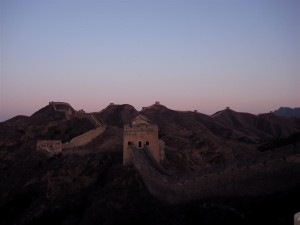
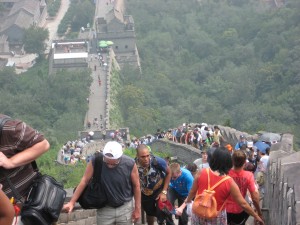
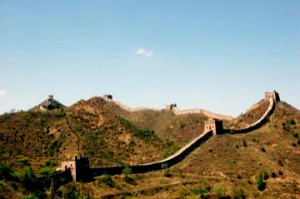

Comments:
David Lloyd-Jones:
I think you owe it to us, your readers, to point out that much of the wall shown in your good photographs consists of sections rebuilt, recreated, or perhaps re-imagined, since 1986.
It would be good to know where the rock came friom for this rebuilding. Who judged the heights and shapes to be made in the places where there certainly was a wall in the past? How close can we assume the modern version to be to that which existed in centuries past?
In short, is what we are seeing a responsible work of archeological research and reconstruction? Or is this the Chinese government’s version of Disney-reality?
-dlj.
Steve:
@David Lloyd-Jones Short answer is a Disney Reconstruction. China’s early 20th century was marred with bombing raids, occupation and artillery strikes, which has left much of “ancient” China decimated. Badaling and Mutianyu are rebuilt substantially, although I’m not too sure about Simatai. Most rock is local, but I don’t have access to CCP construction contracts to know exactly where.
Hope that helps.
-S